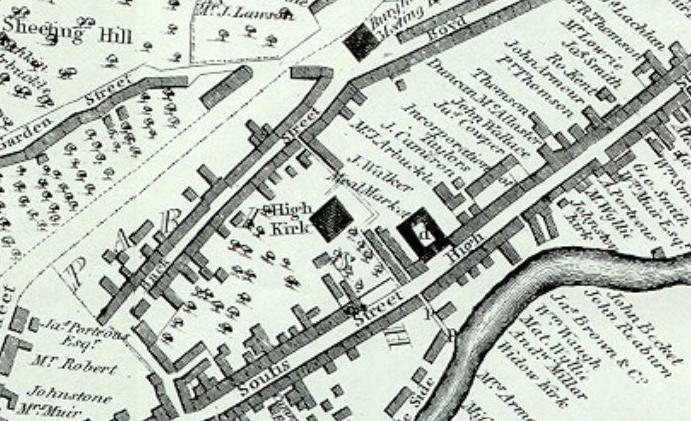Notes related to Back Street
Back o the Yards
The Back o’ the Yards was situated at the edge of the gardens of the homes in Back Street and is now called Garden Street.
Back Street Female Friendly Society
The 1846-47 directory has Back Street Female Friendly Society officers as Mrs Mitchell, Mrs Aitken, James Hannah, John Coats.
Hugh Baird
In 1882, Hugh Baird advertised his services as
a horse shoer and blacksmith. His business
was in Dunlop Street and his home was at
Nelson Street. In 1904 the business was in
Back Street and his home was Segton House.
Alexander Paterson
Alexander Paterson was a grain merchant and
in 1913 he was based in Back Street. Among
other things, he kept treacle in casks.
G & W Rome
In 1904, G & W Rome were lathers and
plasterers at Back Street, Kilmarnock. They
advertised the business as successors to
George Rome. In 1957 they were based in
Church Street.
George Rome
George Rome was a plasterer with a business in Back Street. In 1904, G & W Rome advertised their business as successors to George Rome.
Bowling Green House
In the late 18th century the Bowling Green House was an inn on the east side of what is now Portland Street, just opposite the north side of West
George Street and at the foot of what was then called Back Street. It was kept by Sandy Patrick. Robert Burns was a frequent visitor.
Bowling Club
Kilmarnock Bowling Club was established in 1740 near the Cross. They moved to Mill Lane in 1824 but in 1826 the land was required for a church and
they moved to the present site off London Road. The club is the oldest bowling club in Scotland. The club closed in November of 2021.
Sandy Patrick
Back Street marked the north west edge of town and it contained Sandy Patrick’s pub, which was frequented by Robert Burns. This was the Bowling
Green House. Sandy’s home was a meeting place for local merchants who gathered after a game of bowls. Robert Burns was a regular visitor.
Church Street
Church Street takes it name from the Old High Kirk. It runs from Union Street, under the railway arches to what was East George Street. At one time it
was commercially important and John Menzies once had their distribution depot there. Other businesses in Church Street included an animal feed
company and a building firm. It seems to have been named sometime between 1914 and 1930 having previously been Back Street.
Union Street
Union Street linked High Street and Back Street. It was later given a short extension to meet Wellington Street. Union Street was opened in
October,1860, by Provost Turner. It may have been named after the Union Brigade (Scots Grays) who fought at Waterloo. The opening ceremony
included a volley of shots being fired. Union Street had a bonnet making factory run by a Mr Stewart. The street was home to the Union Street Hall
and the Union Street School.






